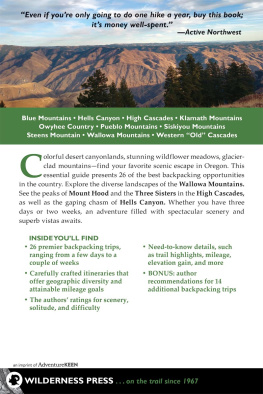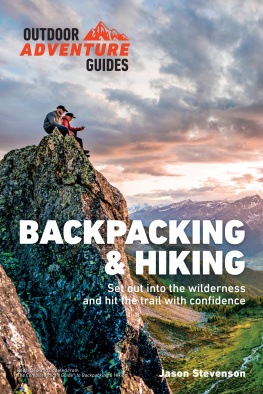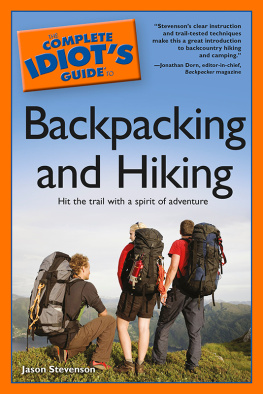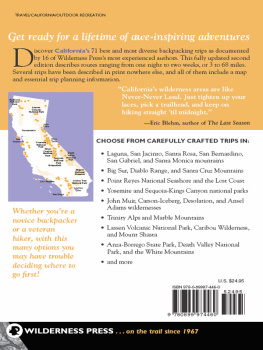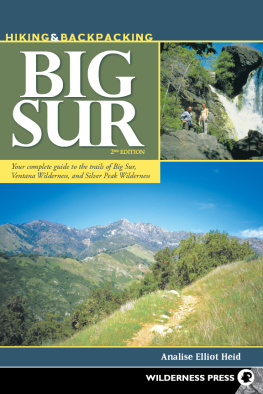
Watersprite Tower overlooking Watersprite Lake ().

Copyright 2021 by Taryn Eyton
21 22 23 24 25 5 4 3 2 1
All rights reserved. No part of this book may be reproduced, stored in a retrieval system or transmitted, in any form or by any means, without the prior written consent of the publisher or a licence from The Canadian Copyright Licensing Agency (Access Copyright). For a copyright licence, visit accesscopyright.ca or call toll free to 1-800-893-5777.
Greystone Books Ltd.
greystonebooks.com
Cataloguing data available from Library and Archives Canada
ISBN 978-1-77164-668-0 (pbk.)
ISBN 978-1-77164-669-7 (epub)
Editing by Lucy Kenward
Copy editing by Erin Parker
Proofreading by Alison Strobel
Cover design by Fiona Siu
Cover photograph by Taylor McColl
Text design by Nayeli Jimenez
Photographs by Taryn Eyton, except where credited otherwise
Greystone Books gratefully acknowledges the Musqueam, Squamish, and Tsleil-Waututh peoples on whose land our office is located.
Greystone Books thanks the Canada Council for the Arts, the British Columbia Arts Council, the Province of British Columbia through the Book Publishing Tax Credit, and the Government of Canada for supporting our publishing activities.

CONTENTS
SAFETY NOTICE
Hiking, scrambling, backpacking, camping, and all forms of outdoor recreation involve inherent risks and an element of unpredictability. Many of the trips in this guidebook are not for novices and may not be safe for your party. There are dangers on every road, trail, and route, and conditions can change at any time. While every effort has been made to ensure accuracy, this book may contain errors. You assume full responsibility for your safety and health in the backcountry. The author, publisher, and distributors accept no liability for any loss, damage, injury, or death arising from the use of this book. Check current conditions, carry the Ten Essentials, exercise caution, and stay within your limits.

INTRODUCTION
BACKPACKING STRIPS US DOWN to our core as humans: all that matters is walking, eating, and sleeping. From my first backpacking trips on the West Coast Trail and in Garibaldi Provincial Park, I was hooked. Instead of worrying about my commute or the status of my email inbox, I spent days engrossed in the meditative rhythms of nature. I slept and woke with the rise and fall of the sun. I wandered through dense forests, scrambled up to vertiginous viewpoints, and paused often, transfixed by squirrels chasing each other up tree trunks or marmots basking on rocks. I had enjoyed the wilderness on day hikes, but the immersion of backpacking deepened the experience. Thankfully, from my home in Vancouver, I dont have to travel very far to camp in the backcountry.
Backpacking in Southwestern British Columbia is for people who want to go beyond day hiking to camp under the stars, enjoy the solitude of sunrise, and explore less-travelled areas. When I started backpacking in this region over 15 years ago, I found few details about where to camp or how to explore farther than I could walk in a day. Today, it can still be hard to find content specifically for backcountry camping. This book is the guide Ive been looking for all these years. It covers some of my favourite overnight and long weekend hiking destinations from the Sunshine Coast in the west, north along the Sea to Sky Highway to the Duffey Lake area, and east along the Fraser, Coquihalla, Skagit, and Similkameen Rivers. The 40 trips in this book are in the traditional territories of the Coast Salish, Nlakapamux, Statimc, and Syilx peoples. They cover over 800 kilometres of trails, with the option to add another 600 kilometres by extending the individual trips or day hiking from their base camps.
The trips here range from easy to very challenging, to suit backpackers of various experience levels. While most people hike and backpack in the summer months in southwestern British Columbia, Ive included low-elevation trails that you can hike in the spring and fall. There are must-see locations that most hikers have heard of and a handful of hidden gems for those seeking solitude or adventure. Each of the trips Ive chosen highlights a different backcountry destination and gives you all the information you need: how to get there, what facilities you can expect at camp, and where you can hike farther into the backcountry from your campsite. While researching this book, I backpacked all of these trails as well as a few that didnt make the cut.
When choosing the backpacking trips for this book, I kept a few guiding principles in mind. Each trip is:
easy to complete in two to three days.
accessible by two-wheel-drive (2WD) vehicle (sometimes with a little bit of added road walking).
located within a few hours of Metro Vancouver, including the Sunshine Coast.
worth dedicating your time off to.
easy to extend, with optional day hikes from a backcountry base camp or multiple possible campgrounds (where feasible).
located in an area with a land manager, like a park, hiking club, or government agency.
The last point is very important to me. I am a certified Leave No Trace Master Educator and have been volunteering to teach wilderness ethics education for over a decade. When a location is featured in a guidebook, increased traffic usually results. Unfortunately, southwestern BC has a few popular locations that are getting loved to death and overrun with campfire scars, poop landmines, and braided trails. I am unwilling to contribute to adding more.
So I have deliberately chosen not to include locations on Crown land that have no formal management plan, no land manager, and no formal facilities. By including only areas with a land manager, I know that a regulatory framework is already in place to maintain trails and install infrastructure like outhouses and food caches. I have also included a section about Leave No Trace best practices. Please familiarize yourself with Leave No Trace before your next hike. Our actions as individuals matter. They can keep the wilderness wild and avoid hurting the places we love.
The first principle of Leave No Trace is Plan Ahead and Prepare, so this book includes a section on trip planning as well as another on safety. Prepared hikers are likely to have less impact on the land and to be able to self-rescue in an emergency. They also have more fun. And having fun is the main reason we go backpacking.
BACKPACKING BASICS
TRIP PLANNING
1. WEATHER AND SEASONS
Compared to weather in the city, backcountry weather is usually colder, wetter, and windier. Its also very unpredictable. Be prepared for cold and wet weather in any season. City weather forecasts are useless in the mountains. If possible, use park or ski resort forecasts to get a better idea of what to expect. Use caution in periods of high rainfall and during the spring melt. All that extra water can cause flooding and landslides. It can also wash out bridges and trails.


